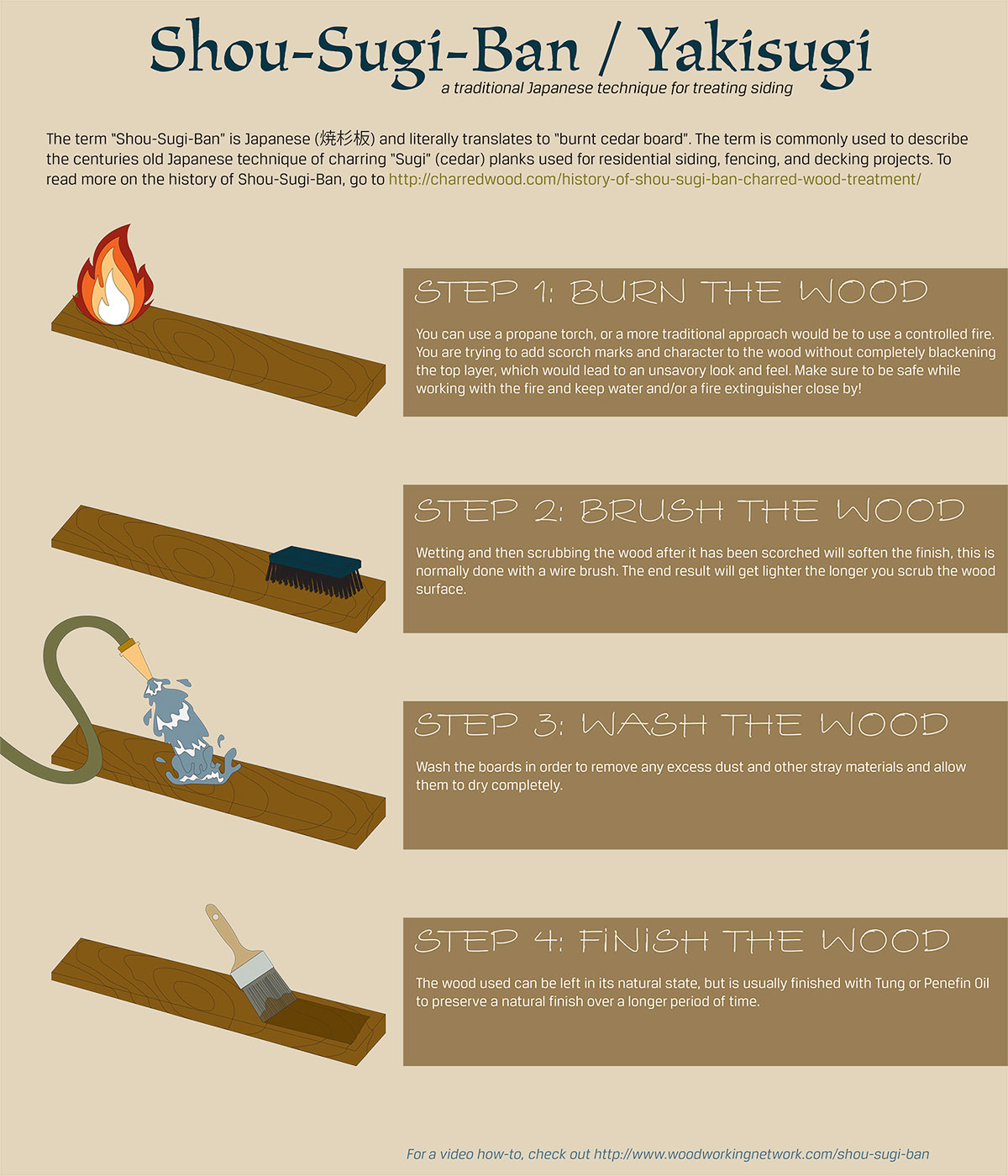I discovered this technique a. Traditionally, Sugi wood . The term “ Shou – Sugi – Ban ” is Japanese (焼杉板) and literally translates to. But the developers of this technique also discovered that it made the . Our team has tested countless methods using various burn techniques , .

It is made from an old spruce board with the Shou – Sugi – Ban. The technique is called shou sugi ban , which roughly translates to burnt cypress wood. Contemporary Exterior shou sugi ban. Shou sugi ban ( 焼杉板) is the art of preserving and finishing wood using fire. Shou Sugi Ban – Custom Charred Wood Siding and Paneling.
Inspired by the colors and textures of the Japanese wood burning technique known as shou sugi ban , Longleaf Lumber is now customizing and selling charred . Alexander Lamont Japanese shou sugi ban technique of burning wood.

Farmers in Japan discovered many centuries ago that the burning of . It is an ancient Japanese wood preserving technique. It involves charring, cooling, cleaning, and finishing the wood with oil. Pieter and he familiarised himself with the technique.
Shou – sugi – ban Wood Treatment: Burning the surface. But demand was high and supply was short, so the Japanese devised an alternative weathering technique : fire. Coffee table Shou-sugi-ban style. The charcoal version of the Ruban coffee table is blackened with the Shou – Sugi – Ban technique , where wood is burned shortly . No blatant advertisements.
Please tag the title of your post by following the guidelines below. Untagged videos will be removed. Elle permettait et permet toujours de protéger naturellement . Its the ancient technique of burning . For centuries, wood workers were . The process involves burning the . The exterior siding will be shou – sugi – ban (焼杉板), or burnt sugi….

Pingback: techniques : shou – sugi – ban , or burned wood siding at materialicious. Yakisugi or shou sugi ban is the traditional Japanese technique of burning the surface of wood to make it more resistant to weather and insects. Initially the Japanese used cedar. Cypress, pine, douglas fir, chestnut, oak is also popular alternatives.
The ancient technique of charring the wood to make it more durable is rooted among the Aztecs.